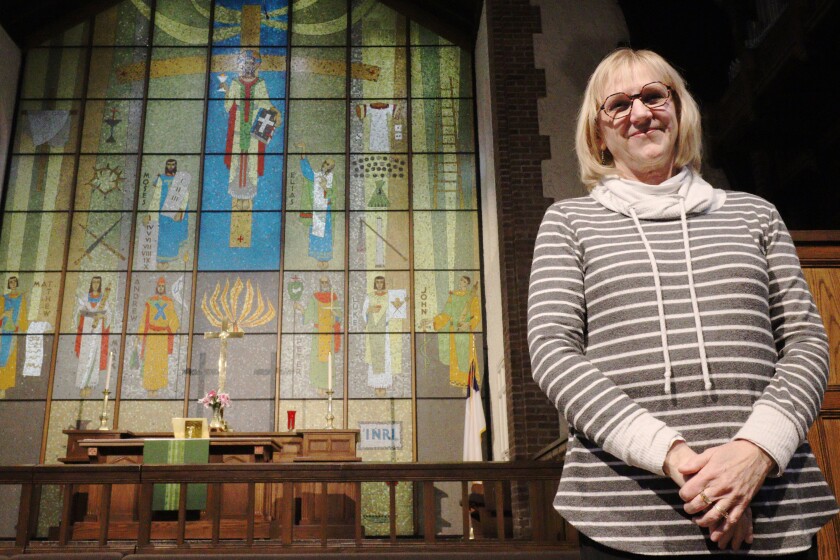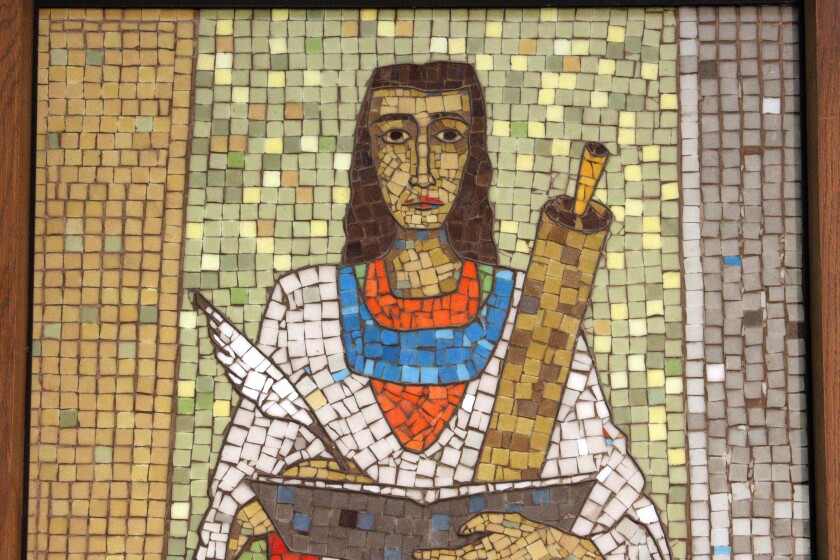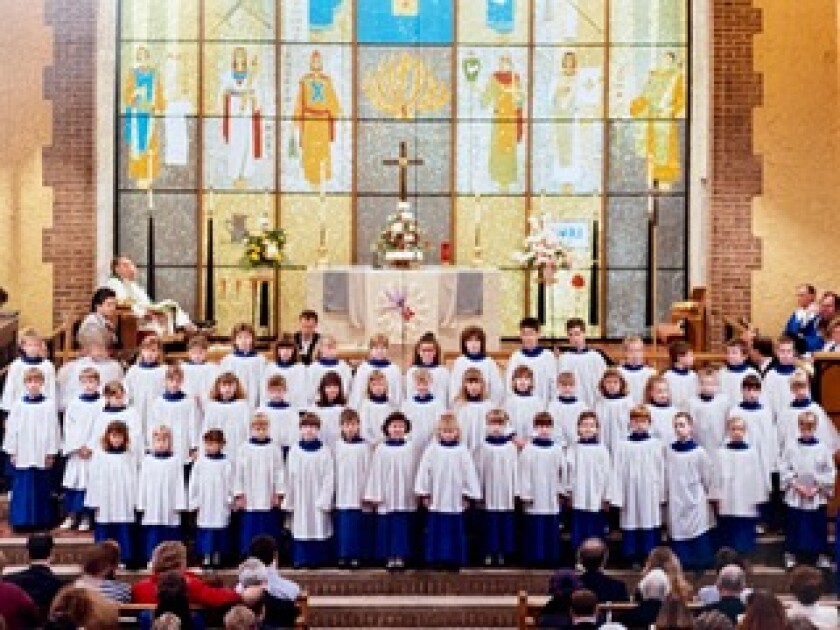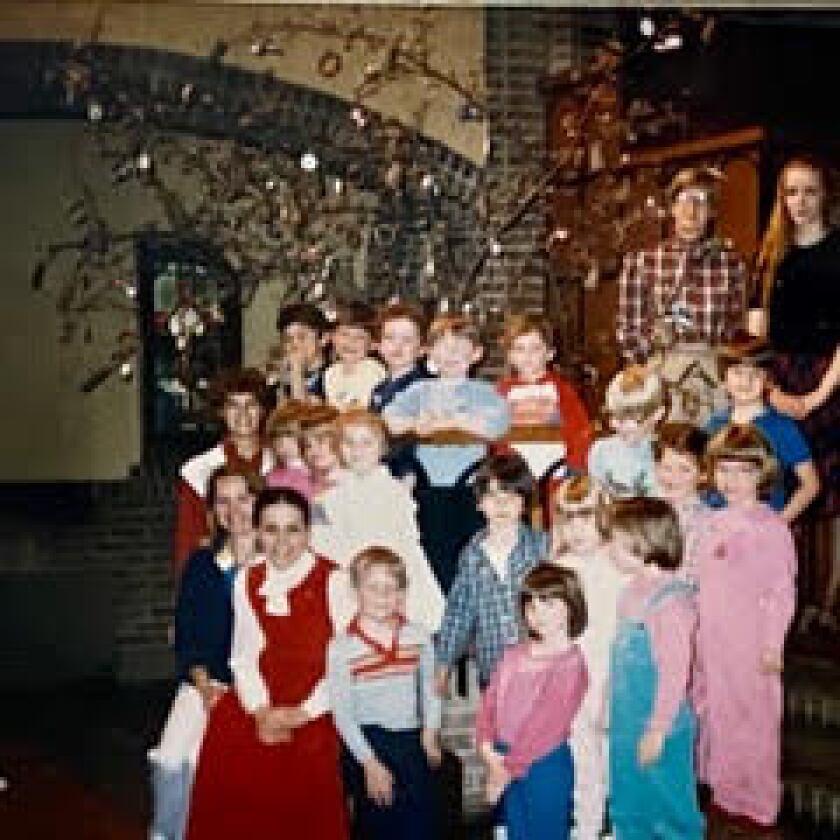
FARGO – In 1872, when the first congregants of First Lutheran Church entered their brand-new sanctuary, the Norwegian language was all that the ear could hear. It persisted so for five decades, until, in the 1920s, sermons and song transitioned largely into English.
“In that day, it was a big controversy,” said Pastor Laurie Neill, but despite momentary resistance, the church “has always been about those coming after us.”
The Norwegian service moved to the basement for a time, before disappearing altogether. “The church had to pivot to match the changing face of the community,” she said.
And it is still doing so. “With every renovation and every addition, it’s the same feeling,” Neill said. “It’s never been about four walls. The church is not the building; it’s the people.”
Yet, the past remains respected. Until Covid, the church annually celebrated Syttende Mai, or the 17th of May, highlighting its Norwegian heritage, at which the women would don Norwegian attire and serve Norwegian foods. “And then, every November (until Covid), we’d have a lutefisk dinner when the whole church stunk.”
A tribute to 150 years
First Lutheran revived some of that heritage Nov. 13 at a 150-year celebration offering breakfast, tours, and a display of mementos marking the years, including the church constitution, an old choir robe, and a quilt capturing many names of its members through time.
As worship arts pastor, this fall, Neill began delving into the history of the church’s artwork and its role and meaning to the community, churning out weekly devotions emphasizing the stained glass, a chapel woodcarving, and the large, central glass and steel mosaic, measuring 24-by-32 feet, put in place behind the altar by artist Cyrus M. Running and his crew in 1962.

Neill said sacred art not only teaches but illuminates Scripture, evoking an emotional response from each viewer to be uniquely “enlightened or inspired or to question.”
First Lutheran has always been rich in music and art, she said, noting particularly the mosaic’s Venetian glass, rich colors, and many panels comprising the whole. “It’s there to glorify God, not just something pretty to look at,” Neill added. “I think of the artist, and what a feat it was for him,” just to get the panels in place.
In her research, Neill also found hidden gems in the stained glass windows, including two articles of the Apostle’s Creed. “The more you engage with art, the more meaning it tends to have.”
‘Spring chicken’ memories
Chet Leverson, 96, only missed a short period of time attending First Lutheran while in the service. He was not only baptized and confirmed there, but also met his wife, Betty, at the church. “We’re both spring chickens,” he joked, noting that Betty is younger, at 91.
It remained a grounding place as they raised their two daughters. “When you’re active in the church, you will meet others of like personality, and I’ve sure met a bunch of them through the years,” Leverson said.
In the spring of 1944, his father asked if he might recruit some of his high-school buddies to sing in the cantata choir, to replace the men involved in war efforts. Tenors and baritones were in short supply. “I rounded up six,” he said, and liked it so much, he decided to stay on after Easter—for around 30 years. A broken hip caused him to miss it this last year.
At the recent anniversary celebration, Leverson especially enjoyed hearing the string orchestra joining with the senior choir and several youth choirs. “The little ones stand about—oh, I don’t think even a yardstick high, any of them,” he commented, “and they really belt it out. It’s an emotional thing” to watch.
He also named the trip he took in young adulthood to sing with other choir members for the International Luther League meeting in Saskatoon, Canada, as a cherished memory. “And if a guy scratched his head long enough, he’d come up with some more memories, all day long,” he remarked.
More of Leverson’s recollections, shared with Pastor Marty Tollefson to commemorate the 150th anniversary, can be found at https://youtu.be/FidYRTKDnDQ . https://www.youtube.com/embed/FidYRTKDnDQ
Joys and sorrows
Marianna Malm and her husband, Reed, married at a First Lutheran Church in Minot in December 1974 before moving to Fargo. They’ve been members at the church here ever since. “Goodness me, it’s been about 40 years, almost a half century,” Malm mused.
“Our kids attended Sunday school and participated in Christmas pageants,” and their daughter, Emily, married there, she said. “We have shared many milestones, both joys and sorrows,” as some members moved on or died.
Also etched in her memory are the candlelight services, and watching Clara Piepkorn direct the children’s choir for over 30 years. Recently, when the adult and children’s choirs came together again, Malm “couldn’t get enough.” “To have those angelic little voices and the adults in harmony was so beautiful.”

The Reformation service a few years ago also stands out. On that day, the Catholic cathedral across the street joined them to “bridge Broadway,” starting at First Lutheran, and singing a hymn together that remained in tune as they processed into St. Mary’s. “We were on the same note and word when we arrived; it was glorious!” she shared.
Malm also recalled the year Pastor Jim Bjorge revived the tree branch placed in the sanctuary that had gone dormant just in time for an Easter blooming. “Decorating that tree was so symbolic that year,” she said, indicating the dead coming back to life.

She also mentioned how First Lutheran’s centrality within the community as a “downtown church” has kept them aware of and wanting to help their neighbors.
“I don’t know that the immigrants that started it knew that there would be such a homeless population, but, we have the homeless Jesus statue, and I think we have always been mindful” of this segment, she said, trying to address both its physical and spiritual needs.
Malm said the location also lends itself to summer concerts, food trucks, and the chance to reach out to the wider community.
“The leaders of First Lutheran built a church that was far greater than they could ever need at the time,” Malm said, pointing to a history of good sermons with strong gospel messages, and life-changing mission-trip opportunities led by Pastor Rollie Johnson. “It’s become our extended family; a community of saints.”
The church as lungs
Now, as ever, Neill said, First Lutheran is asking: “How do we best meet the needs of the community?”
Covid was a particularly revealing time, she admitted. The church had just gone through a major renovation right before everything shut down. “We had this beautiful space and it was empty, and that really resonated with us; that it’s not about the building.”
Certainly, gathering the community matters, she said, likening the church to “the lungs of a body.” “We breathe people in, and they hear Scripture, worship, and learn. Then we breathe people out, to go out into the world.”
But in gathering, we seek, and see, God in one another, she said, recalling words from a seminary professor: “The world is a harsh place, and about every seven days, we need to be reminded of who we are in God.”
In that, she said, we Christians ought not make demands, viewing church with a “consumer mentality,” focusing on what we’re getting out of it. Instead, “We should be asking, ‘Did I put a smile on God’s face?’ and ‘What am I giving back with my time?’”
The current task, she said, is to find the next pivot point. “It’s no longer, ‘Build it and they will come.’ It’s post-Christendom now,” Neill said. “The answer is out there; we need to bring the church to the people.”
[For the sake of having a repository for my newspaper columns and articles, I reprint them here, with permission, a week after their run date. The preceding ran in The Forum newspaper on Nov. 25, 2022.]

Leave a Reply